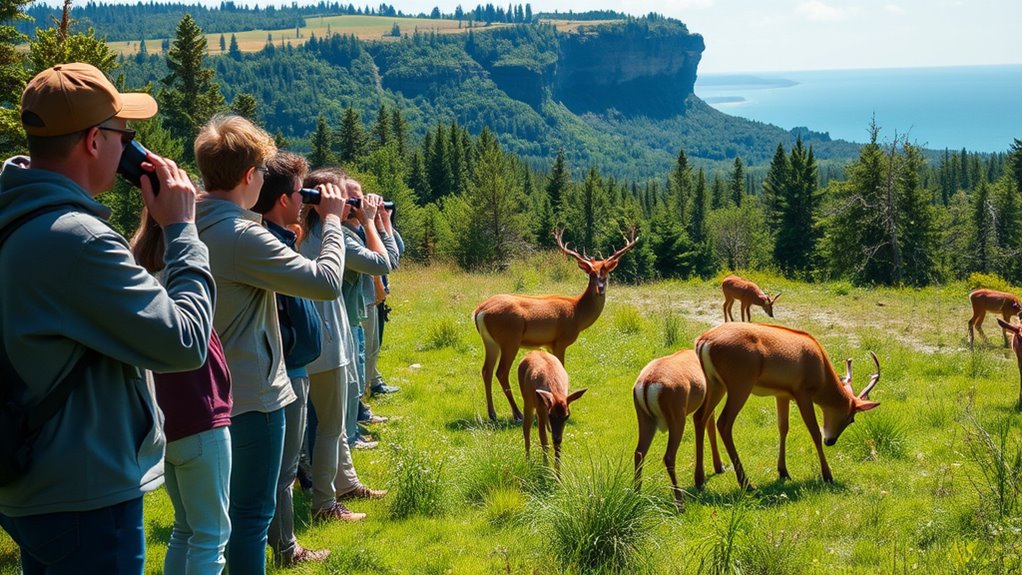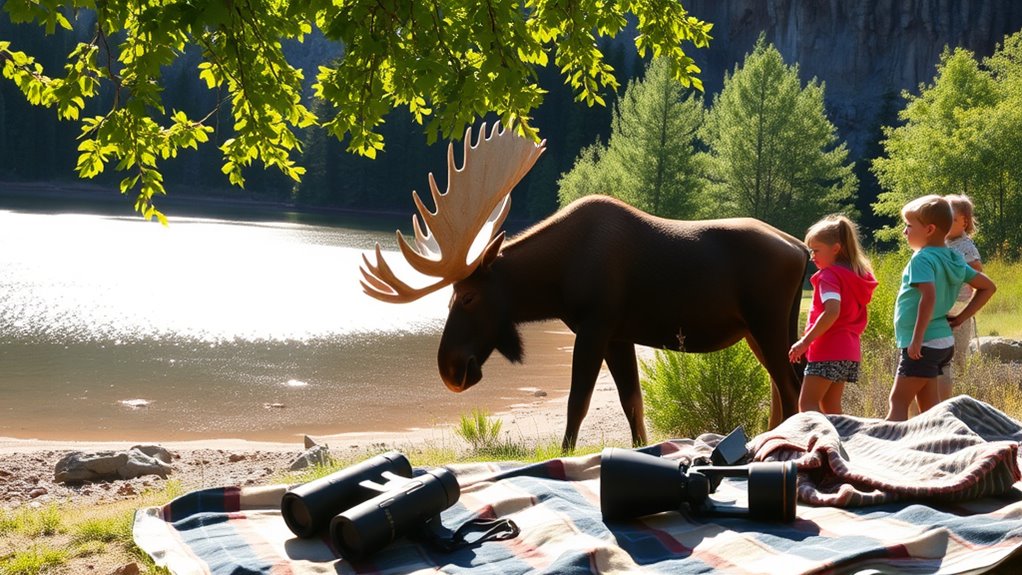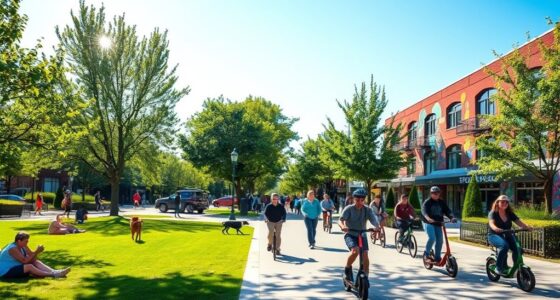When viewing wildlife in Forillon National Park, keep your distance to avoid stressing the animals. Use binoculars or a telephoto lens instead of approaching them. Never feed the wildlife, as it disrupts their natural behaviors. Stick to designated trails to protect their habitats and be mindful of the impact you make. Always look for signs of discomfort in the animals and back off if needed. There’s so much more to explore about preserving this beautiful environment.
Key Takeaways
- Use binoculars or telephoto lenses to observe wildlife from a safe distance, maintaining at least 100 meters from large animals.
- Do not feed wildlife, as it disrupts their natural behaviors and can lead to aggressive interactions.
- Stick to designated trails to protect ecosystems and minimize human impact on habitats.
- Observe wildlife behavior for signs of stress and back off if animals show discomfort.
- Maintain a respectful distance to ensure the well-being of animals and preserve their natural routines.

When you visit Forillon National Park, you’re stepping into a stunning natural habitat where diverse wildlife thrives. The park is home to an abundance of species, from seals basking on the rocks to deer grazing in the meadows. Observing these creatures in their natural environment can be a thrilling experience, but it’s vital to do so responsibly. Following wildlife viewing etiquette ensures that both you and the animals can enjoy the beauty of this incredible place.
One of the golden rules of wildlife viewing is to avoid feeding wildlife. It might seem harmless to toss a chip to a curious raccoon or a piece of bread to a gull, but this practice can have serious consequences. Feeding wildlife disrupts their natural foraging behavior, making them dependent on human handouts. This can lead to aggressive behavior, as animals begin to associate humans with food, putting both parties at risk. Instead, enjoy watching them from a distance. Use binoculars or a telephoto lens to capture their beauty without intruding on their space.
Respecting habitats is equally important. The ecosystems within Forillon are delicate and can be easily disturbed by human activity. Stay on designated trails to minimize your impact on the plants and animals that call this park home. When you wander off the path, you risk trampling vegetation and disturbing nesting sites. Remember, every step you take can affect the delicate balance of this environment. By staying on the trails, you help preserve the habitats that support the park’s wildlife.
As you explore, keep your distance from animals. It’s tempting to get a closer look, but approaching wildlife can stress them out and disrupt their natural behaviors. Follow the park’s guidelines regarding safe viewing distances—typically, you should stay at least 100 meters away from large animals, like bears and moose. If an animal starts to show signs of stress, such as moving away or changing its posture, it’s a clear signal that you need to back off.
Frequently Asked Questions
What Types of Wildlife Can I Expect to See in Forillon National Park?
In Forillon National Park, you can expect to see a variety of wildlife, including numerous bird species like puffins and eagles. Keep your eyes peeled for marine mammals too; you might spot seals and even whales during the right season. The park’s diverse ecosystems provide a perfect backdrop for these creatures, so grab your binoculars and enjoy the incredible sights that nature has to offer while you explore!
Are There Specific Viewing Areas for Different Animals?
Yes, there are designated observation points and animal-specific viewing zones in Forillon National Park. For instance, if you want to catch a glimpse of seals basking on the rocks, head to the designated viewpoint at Cap Gaspé. It’s the perfect spot for watching these marine mammals without disturbing them. By knowing where to go, you’ll enhance your wildlife experience while respecting their habitats and behaviors. Enjoy your adventure!
Is It Safe to Approach Wildlife in the Park?
It’s not safe to approach wildlife in the park. For your safety and the animals’, keep a respectful distance. Wildlife safety is essential, as animals can react unpredictably when they feel threatened. Observe them from afar, using binoculars if you want a closer look. This way, you can enjoy their behavior without disturbing their natural habitat. Always remember, respecting wildlife means protecting both yourself and the animals you admire.
What Should I Do if I Encounter an Aggressive Animal?
If you encounter an aggressive animal, think of it as a stormy sea. Your best course is to stay calm and back away slowly, avoiding sudden movements. Observe its wildlife behavior; don’t make direct eye contact, as it might escalate the situation. Always prioritize safety precautions: keep your distance, and if necessary, use barriers like trees. If it charges, make noise and stand your ground, showing you’re not a threat.
Can I Bring My Dog While Wildlife Viewing?
You can’t bring your dog while wildlife viewing. It’s important to respect the park’s rules to safeguard both wildlife and your pet. If you do visit areas where dogs are allowed, keep them on a leash at all times to prevent any disturbances. Don’t forget to clean up after your pet and dispose of waste properly. Following these guidelines ensures a safe and enjoyable experience for everyone, including the animals in their natural habitat.
Conclusion
So, remember, when you’re out in Forillon National Park, treat the wildlife like the royalty they are! Keep your distance, stay quiet, and respect their homes. If you don’t, you might as well be throwing a party in their living room! Your actions can keep this stunning ecosystem thriving, or send it spiraling into chaos. So, be a guardian of nature, not a disruptor. The animals are counting on you—let’s not let them down!










